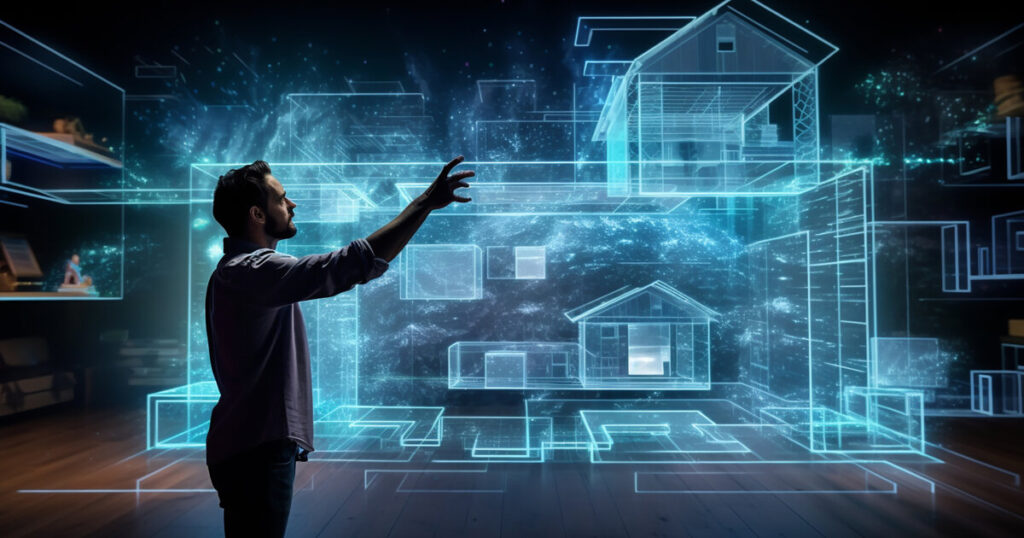The field of architecture, long rooted in human creativity, manual drafting, and iterative physical modeling, is on the verge of a revolutionary transformation. The emergence of Artificial Intelligence (AI) and Machine Learning (ML) is fundamentally changing the way buildings are conceived, designed, and constructed. AI is no longer a futuristic concept but a powerful tool that augments human creativity, automates tedious tasks, and unlocks new possibilities in architectural design. It’s about creating a synergistic relationship where the architect’s vision is amplified by the computational power of AI, leading to more efficient, sustainable, and innovative structures. This article will provide an in-depth exploration of how AI is being integrated into the design process, from generative design and data-driven analysis to automated documentation and predictive maintenance, demonstrating how it is shaping a smarter and more resourceful future for the built environment.
The Dawn of Generative Design

One of the most profound applications of AI in architecture is generative design. Unlike traditional design, where an architect creates a single solution, generative design uses AI to explore thousands, or even millions, of design possibilities based on a set of parameters defined by the architect.
A. Defining Parameters: The process begins with the architect setting a series of constraints and goals. These can include a building’s footprint, budget, material preferences, energy efficiency targets, and structural requirements. The architect acts as a guide, providing the AI with the framework within which to work.
B. Algorithmic Exploration: The AI then uses powerful algorithms to generate a multitude of design options that meet these parameters. It can optimize for factors that would be incredibly difficult for a human to calculate manually, such as solar heat gain, pedestrian flow, or structural load distribution. The AI can quickly iterate through a vast number of permutations, revealing innovative solutions that a human might never have considered.
C. Human-AI Collaboration: Generative design is not about replacing the architect. Instead, it is a tool for augmenting creativity. The architect is responsible for curating and refining the AI’s suggestions. They can choose the most promising designs and use their expertise and artistic vision to finalize the details, ensuring the final product is not only optimized but also aesthetically compelling and human-centered.
Data-Driven Site Analysis and Urban Planning
Before a single line is drawn, AI is revolutionizing the initial stages of a project by providing a level of data-driven analysis that was previously impossible. This leads to more informed decisions and better integration of the building with its environment.
A. Comprehensive Site Analysis: AI can analyze vast datasets to inform a site-specific design. This includes data on everything from climate patterns, seismic activity, and soil composition to local zoning laws, traffic flow, and demographic trends. This analysis can help architects predict a building’s performance and impact on the community long before it’s built.
B. Optimizing Urban Spaces: On a macro level, AI can be used to optimize urban planning. By analyzing data on pedestrian movement, public transit usage, and economic activity, AI can help planners design more efficient, walkable, and vibrant cities. It can identify the best locations for new parks, public squares, or commercial developments, ensuring they serve the needs of the community.
C. Predictive Modeling: AI can create detailed simulations of a building’s performance in various conditions. It can predict how a building will respond to a heatwave, a flood, or a power outage, allowing architects to design for resilience from the very beginning. This predictive modeling is a critical tool in an era of climate change, where building for the future means preparing for uncertainty.
Automated Documentation and Construction Management
The AI-powered design process extends beyond the creative phase into the often-tedious world of documentation and construction management. This automation streamlines the workflow, reduces errors, and improves efficiency.
A. Automated Drawing and Documentation: AI can automate the creation of detailed architectural drawings, schematics, and construction documents. By taking a 3D model, AI can generate all the necessary 2D plans, elevations, and sections, ensuring consistency and accuracy. This frees up the architect’s time to focus on design and creative problem-solving.
B. Parametric Modeling and BIM: AI is supercharging Building Information Modeling (BIM). Parametric modeling allows a change in one part of the model to automatically update all related documentation. AI can further enhance this by flagging potential conflicts or errors in the model, such as a clash between a plumbing pipe and a structural beam, long before they become an issue on the construction site.
C. Optimized Construction Scheduling: AI can analyze construction data to create highly optimized schedules that account for factors like material delivery times, workforce availability, and potential weather delays. It can also monitor the construction site in real-time using cameras and sensors, providing project managers with a clear overview of progress and potential issues.
AI in Sustainable and Regenerative Design
AI is a powerful ally in the fight for a more sustainable built environment. It can help architects design buildings that are not only energy-efficient but also actively regenerative.
A. Energy Performance Optimization: AI can analyze a building’s energy consumption in real-time and make real-time adjustments to its systems. It can predict a building’s energy needs based on occupant behavior, external weather conditions, and electricity prices, and then optimize the use of HVAC, lighting, and other systems to minimize consumption and cost.
B. Material Selection and Circularity: AI can help architects select the most sustainable materials for a project. It can analyze the embodied energy of different materials, their potential for recycling or reuse, and their proximity to the construction site. This helps architects to design buildings with a circular economy in mind, ensuring that every component has a future life.
C. Regenerative Urban Design: On a city-wide scale, AI can help urban planners design spaces that are actively regenerative. It can identify the best locations for new green spaces to help manage stormwater runoff, or it can optimize the placement of solar panels and wind turbines to maximize energy generation and create a more sustainable urban ecosystem.
The Future of Human-AI Collaboration

The AI-powered design process is not just a technological shift; it’s a cultural one. It requires a new way of thinking and a new collaborative dynamic between humans and machines.
A. AI as a Creative Partner: The future of architecture is not about a cold, calculated machine taking over. It is about a symbiotic relationship where the human architect provides the vision, the artistry, and the empathy, and the AI provides the computational power and the ability to explore complex possibilities. AI is a partner in creativity, a tool for exploration and discovery.
B. New Skill Sets: Architects of the future will need to be skilled in a different way. They will need to be able to work with AI, define the right parameters, and interpret the results. The focus will shift from the mechanics of drafting to the higher-level skills of creative direction, strategic thinking, and human-centered design.
C. The Democratization of Design: AI has the potential to democratize the design process, making it more accessible to a wider range of people. It can empower community members to participate in the design of their own neighborhoods by providing them with user-friendly tools that allow them to explore and visualize different design options.
Conclusion
The integration of AI into the architectural design process marks a pivotal moment in the history of the built environment. It is a powerful force for change that is making our buildings smarter, more sustainable, and more responsive to human needs. From generative design that unlocks new creative possibilities to data-driven analysis that informs every decision, AI is augmenting the architect’s abilities and streamlining the entire lifecycle of a building, from conception to completion.
This is not a future where machines replace human creativity. Instead, it is a future where the architect is empowered to focus on the most uniquely human aspects of their profession—the artistry, the empathy, and the vision. The AI-powered design process promises to deliver buildings that are not only more efficient and resilient but also more beautiful and more deeply connected to their environment. It is a testament to our ability to harness technology to build a better future, one where our buildings are as intelligent and adaptive as the natural systems that inspire them. The collaboration between human and artificial intelligence is poised to create a new golden age of architecture, a world of buildings that are more than just structures; they are living, breathing ecosystems designed to serve both people and the planet.











